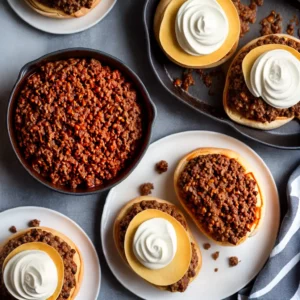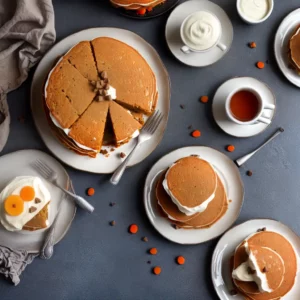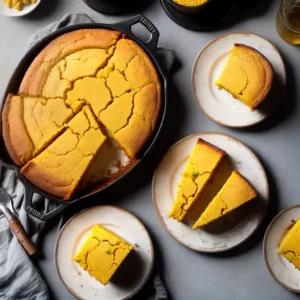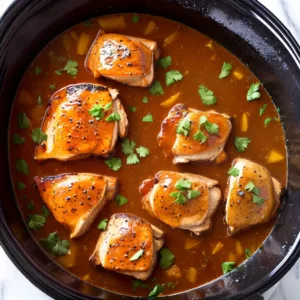How Many Fluid Ounces in a Cup
Are you wondering how many fluid ounces are in a cup? Look no further! In this measurement conversion guide, I’ll help you understand the relationship between fluid ounces and cups.
Factual data: In American measurement, there are 8 fluid ounces in a cup. This conversion is used in many situations, not just in recipes. Knowing how to convert between ounces and cups is a valuable skill in daily life. When it comes to dry ingredients, the conversion is not as straightforward as it is for liquids. The weight of a cup of dry materials can vary depending on the specific material and how it’s packed. For precision in measuring, especially in scientific or DIY tasks, using a scale is recommended.
Key Takeaways – How Many Fluid Ounces in a Cup:
- There are 8 fluid ounces in a cup according to the American measurement system.
- Understanding the conversion between fluid ounces and cups is useful beyond cooking.
- When measuring dry ingredients, the weight of a cup can vary based on the material and packing method.
- Precision in measuring dry ingredients is important in scientific or DIY tasks, and using a scale is recommended.
- Knowing fluid ounces to cups conversion can come in handy in various contexts beyond the kitchen.
Understanding Fluid Ounces and Cups
Before we dive into the conversions, let’s clarify what exactly we mean by fluid ounces and cups. In the United States, a fluid ounce is a unit of volume used to measure liquids. It is abbreviated as “fl oz” and is equivalent to approximately 29.6 milliliters. Fluid ounces are commonly used in recipes and cooking to accurately measure ingredients like water, milk, and oil.
A cup, on the other hand, is also a unit of volume used for measuring liquids, but it is a larger unit compared to fluid ounces. In American measurement, there are 8 fluid ounces in a cup. This conversion is used in many situations, not just in recipes. Knowing how to convert between ounces and cups is a valuable skill in daily life.
When it comes to dry ingredients, the conversion is not as straightforward as it is for liquids. The weight of a cup of dry materials can vary depending on the specific material and how it’s packed. For precision in measuring, especially in scientific or DIY tasks, using a scale is recommended. This ensures accurate and consistent measurements, avoiding any discrepancies that may affect the outcome of your recipe or project.

| Fluid Ounces | Cups |
|---|---|
| 1 fl oz | 0.125 cup |
| 2 fl oz | 0.25 cup |
| 4 fl oz | 0.5 cup |
| 8 fl oz (1 cup) | 1 cup |
| 16 fl oz | 2 cups |
| 32 fl oz | 4 cups |
Now that we have a better understanding of fluid ounces and cups, let’s move on to exploring the conversion process from fluid ounces to cups. Understanding this conversion will make your culinary adventures, as well as other daily tasks, much simpler and more enjoyable.
The Basics: Fluid Ounces to Cups Conversion
The conversion from fluid ounces to cups follows a straightforward ratio. In American measurement, 1 cup is equal to 8 fluid ounces. This means that if you have a quantity of liquid measured in fluid ounces, you can easily convert it to cups by dividing the number of fluid ounces by 8.
To better visualize this conversion, here is a handy table that shows some common measurements in both fluid ounces and cups:
| Fluid Ounces | Cups |
|---|---|
| 1 fl oz | 1/8 cup |
| 2 fl oz | 1/4 cup |
| 4 fl oz | 1/2 cup |
| 8 fl oz | 1 cup |
| 16 fl oz | 2 cups |
| 32 fl oz | 4 cups |
It’s important to keep in mind that this conversion applies specifically to fluid ounces and cups. When it comes to measuring dry ingredients, the conversion is not as straightforward. The weight of a cup of dry materials can vary depending on the specific material and how it’s packed.
For precise measurements, especially in scientific or DIY tasks, it is recommended to use a scale. By weighing your dry ingredients, you can ensure accurate and consistent results in your recipes. A scale allows you to follow precise measurements as indicated in the recipe, eliminating any guesswork or potential inconsistencies.

Having a good understanding of how to convert between fluid ounces and cups is a valuable skill in daily life. Whether you’re cooking, baking, or simply need to measure liquids for various purposes, knowing this conversion ratio will make your tasks easier and more efficient.
Fluid Ounces to Cups Conversion Table
To make your life easier, here’s a handy conversion table for fluid ounces to cups:
| Fluid Ounces | Cups |
|---|---|
| 1 fl oz | 0.125 cup |
| 2 fl oz | 0.25 cup |
| 4 fl oz | 0.5 cup |
| 8 fl oz | 1 cup |
| 16 fl oz | 2 cups |
| 32 fl oz | 4 cups |
As you can see from the table, there are 8 fluid ounces in a cup. This conversion is useful in many situations, not just in recipes. Whether you’re measuring liquids for cooking or baking, or simply trying to convert fluid ounces to cups for everyday tasks, this table can be a valuable reference.
However, when it comes to measuring dry ingredients, the conversion is not as straightforward as it is for liquids. The weight of a cup of dry materials can vary depending on the specific material and how it’s packed. To ensure precision in measuring, especially in scientific or DIY tasks, using a scale is highly recommended.

Having a good understanding of fluid ounces to cups conversion can make your life easier, whether you’re cooking, baking, or simply following a recipe. By using this conversion table and considering the weight variations for dry ingredients, you’ll be able to confidently measure and convert between fluid ounces and cups in a variety of situations.
Liquid Measurements in the Kitchen
Liquid measurements are an essential part of cooking and baking, as they ensure the right balance of flavors and textures. Whether you’re following a recipe or improvising in the kitchen, understanding different liquid measurements is crucial for achieving delicious results. From cups to quarts to gallons, these measurements help us determine the proper amount of liquid to use in our culinary creations.
When working with smaller quantities, cups are the go-to measurement. They provide a convenient way to measure liquids like water, milk, or oil. A standard measuring cup typically holds 8 fluid ounces, which is equivalent to 1 cup. Having a set of measuring cups in your kitchen is highly recommended for accurate and consistent results.
If you’re dealing with larger quantities, such as when making a big batch of soup or a refreshing pitcher of lemonade, it’s important to be familiar with larger liquid measurements. A quart is equal to 32 fluid ounces, which is equivalent to 4 cups. A gallon, on the other hand, contains 128 fluid ounces, which is equal to 16 cups or 4 quarts. These measurements are especially helpful when scaling up recipes or serving a crowd.
Common Liquid Measurements in the Kitchen
| Measurement | Fluid Ounces | Cups | Quarts | Gallons |
|---|---|---|---|---|
| 1 cup | 8 fl oz | 1 cup | 1/4 quart | 1/16 gallon |
| 1 quart | 32 fl oz | 4 cups | 1 quart | 1/4 gallon |
| 1 gallon | 128 fl oz | 16 cups | 4 quarts | 1 gallon |
Knowing these common liquid measurements and their equivalents can make your time in the kitchen more efficient and enjoyable. They allow you to follow recipes accurately and ensure consistent results. So the next time you’re whipping up a culinary masterpiece, remember to pay attention to the liquid measurements and let them guide you to culinary success!
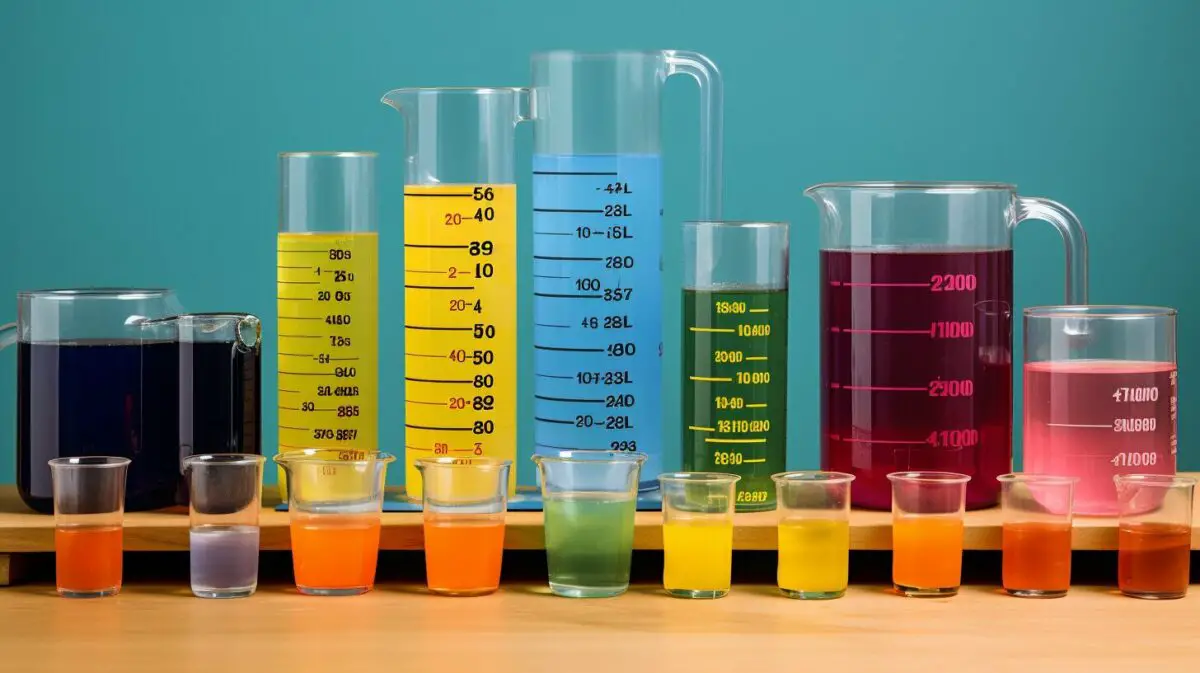
In addition to cups and fluid ounces, recipes often call for smaller quantities of liquids measured in tablespoons, teaspoons, or even fractions. These measurements are used to add precise amounts of ingredients to achieve the desired taste and texture in dishes.
The most commonly used smaller liquid measurements in cooking include:
- Tablespoons: A tablespoon is approximately equal to 0.5 fluid ounces or 3 teaspoons. It is often used to measure ingredients like oil, vinegar, or sauces.
- Teaspoons: A teaspoon is approximately equal to 0.17 fluid ounces or 0.33 tablespoons. It is commonly used for smaller amounts of liquids like spices or extracts.
- Fractions: Sometimes recipes call for measurements in fractions, such as 1/4 cup or 1/2 teaspoon. These fractions provide precise measurements for ingredients like flour, sugar, or salt.
Understanding and accurately measuring these smaller liquid measurements can make a significant difference in the outcome of your recipes. Whether you’re a seasoned chef or a novice cook, having the right tools, including measuring spoons, will help you achieve the perfect balance of flavors in your dishes.
| Liquid Measurement | Equivalent |
|---|---|
| 1 tablespoon | 0.5 fluid ounces or 3 teaspoons |
| 1 teaspoon | 0.17 fluid ounces or 0.33 tablespoons |
| 1/4 cup | 2 fluid ounces or 4 tablespoons |
| 1/2 cup | 4 fluid ounces or 8 tablespoons |
| 3/4 cup | 6 fluid ounces or 12 tablespoons |
Remember, precise measurements are essential for achieving consistent results in your cooking. So, make sure you have the right measuring tools and take your time when measuring smaller amounts of liquids. Your taste buds will thank you!
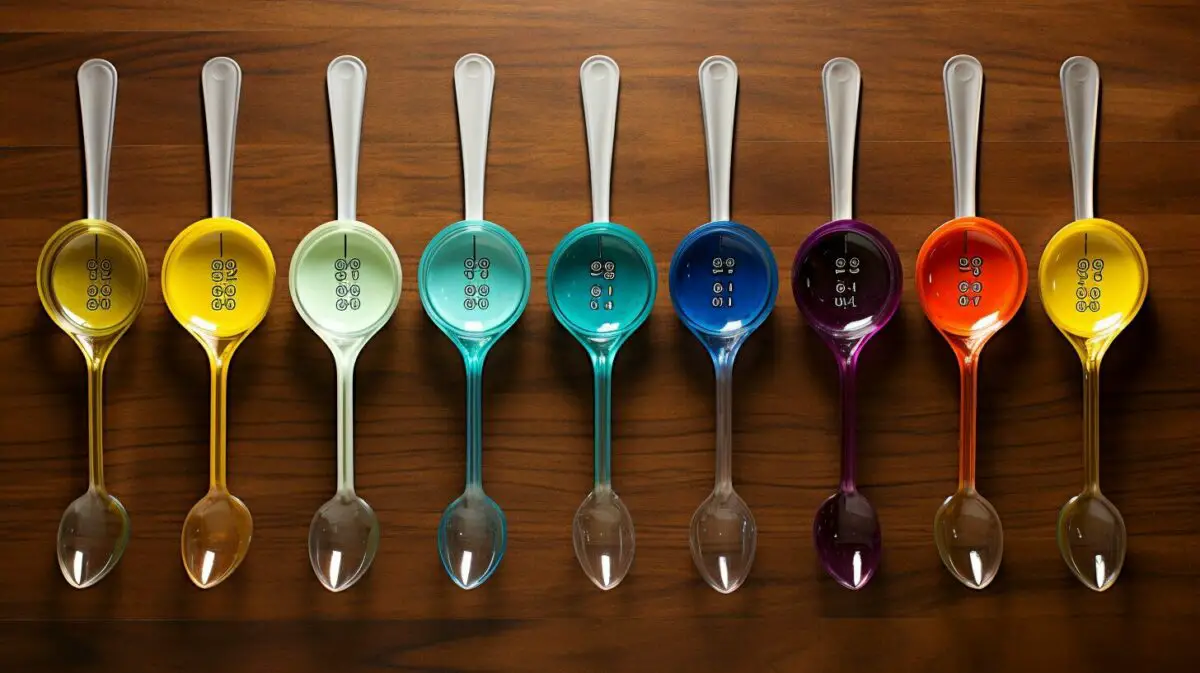
When it comes to measuring dry ingredients, such as flour or sugar, weight matters more than volume. Unlike liquids, which can be easily poured into a measuring cup, dry ingredients can vary in density and how they settle in the measuring cup. This can lead to inconsistencies in volume measurements. That’s why using a scale to measure dry ingredients is recommended for accurate and precise results.
By weighing dry ingredients, you can ensure that you are using the exact amount called for in a recipe, regardless of how the ingredient is packed. For example, a cup of sifted flour will weigh less than a cup of flour that has been packed tightly. Measuring by weight eliminates the guesswork and provides consistency, especially in baking where precise measurements are crucial for the final outcome.

Benefits of Using a Scale
Using a scale offers several benefits when measuring dry ingredients. Firstly, it allows for greater accuracy. A scale measures the weight of the ingredient directly, eliminating any potential errors in measuring cups or spoons. Secondly, using a scale provides consistency. When you weigh ingredients, you ensure that each batch of your recipe will have the same proportions, resulting in consistent flavor and texture. Lastly, a scale is versatile and can be used for measuring a variety of dry ingredients, from flour and sugar to nuts and chocolate chips.
When using a scale, be sure to place your measuring container (such as a bowl or plate) on the scale before zeroing it out. This will account for the weight of the container and give you an accurate measurement of the ingredient alone. Many scales also allow you to switch between grams and ounces, offering flexibility depending on your preference or the recipe’s requirements. So, the next time you’re baking or cooking with dry ingredients, consider using a scale for more precise and reliable measurements.
| Dry Ingredient | Approximate Weight per Cup |
|---|---|
| All-Purpose Flour | 120 grams (4.2 ounces) |
| Granulated Sugar | 200 grams (7.1 ounces) |
| Butter | 227 grams (8 ounces) |
| Almonds (whole) | 140 grams (4.9 ounces) |
| Chocolate Chips | 170 grams (6 ounces) |
Cup Measurement Variations for Dry Ingredients
Unlike liquid measurements, the weight of a cup of dry materials can vary depending on the specific material and how it’s packed. When it comes to baking or cooking, precision in measuring is crucial for a successful outcome. Using the correct amount of ingredients ensures that your dish will turn out just right. Let’s take a closer look at the variations you might encounter when measuring dry ingredients.
When measuring dry materials such as flour, sugar, or spices, it’s essential to consider the packing method. The way a cup of dry ingredients is packed can affect its weight and, consequently, the outcome of your recipe. For example, if you scoop flour directly from the bag using a measuring cup, it will be less dense and lighter than if you spoon it gently into the cup and level it off. This difference in packing density can lead to significant variations in the weight of a cup of dry ingredients.
To ensure accuracy in your measurements, it is advisable to use a kitchen scale. Weighing your dry ingredients provides a more precise measurement, eliminating any guesswork or inconsistencies caused by packing variations. A kitchen scale allows you to measure your ingredients by weight, ensuring your recipes turn out consistently delicious. With a scale, you can easily convert any amount of dry material from cups to grams or ounces, making it easier to follow recipes from across the globe.
Remember, when it comes to baking and cooking, precision is key. Using a kitchen scale takes the guesswork out of measuring dry ingredients and ensures that your culinary creations are a success every time.
Table: Common Dry Ingredient Measurement Conversions
| Dry Ingredient | 1 Cup (Unpacked) | 1 Cup (Packed) | 1 Cup (Sifted) |
|---|---|---|---|
| All-Purpose Flour | 120g | 140g | 100g |
| Granulated Sugar | 200g | 220g | N/A |
| Brown Sugar | 220g | 240g | N/A |
| Powdered Sugar | 125g | 160g | N/A |
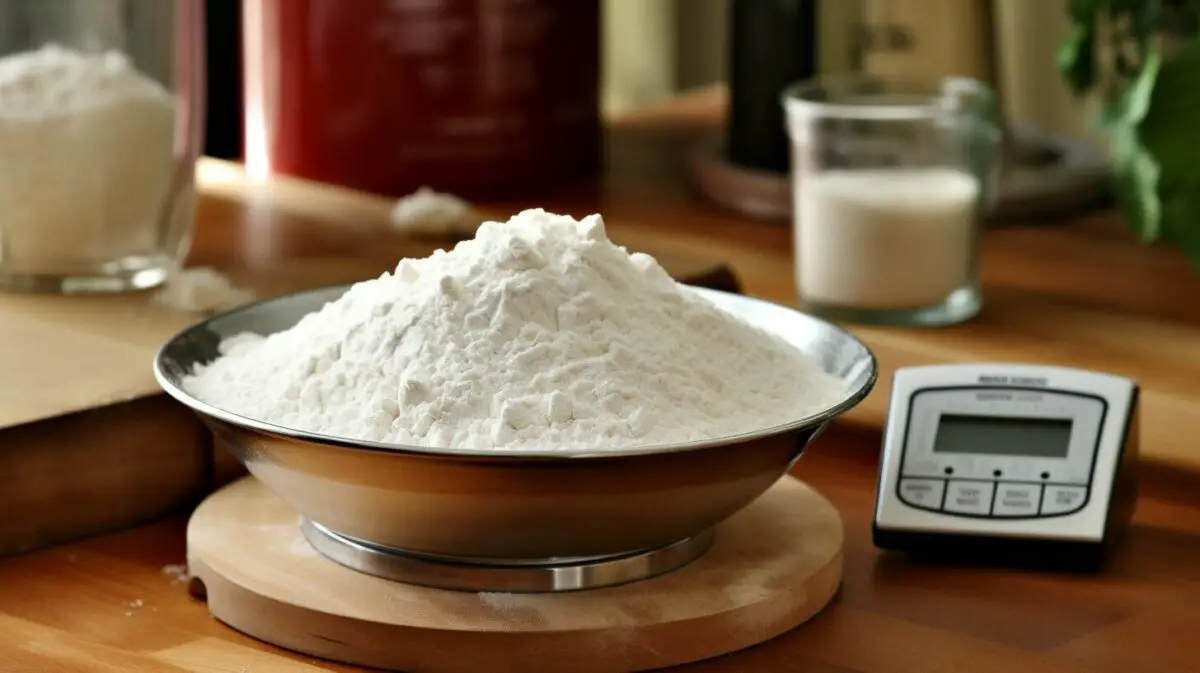
Using a kitchen scale takes the guesswork out of measuring dry ingredients and ensures that your culinary creations are a success every time.
Next time you’re baking or cooking with dry ingredients, remember that the weight of a cup can vary depending on how it’s packed. To achieve precise measurements, consider investing in a kitchen scale. It will help you create consistently delicious dishes and make conversions between cups and other weight measurements a breeze. Say goodbye to guesswork and hello to accuracy in the kitchen!
Precision in Measuring Dry Ingredients
Achieving precision in measuring dry ingredients is crucial, especially in scientific experiments or DIY projects. When it comes to cooking and baking, accurate measurements can make all the difference in the final result. Unlike liquid measurements, converting dry ingredients to cups is not as straightforward due to the variations in weight and density.
For example, a cup of all-purpose flour may weigh differently than a cup of granulated sugar. Factors such as how the ingredient is packed into the cup can also affect the weight. That’s why relying solely on volume measurements for dry ingredients can lead to inconsistent results. To ensure accuracy, it’s recommended to use a kitchen scale for measuring dry ingredients.
Using a scale allows you to measure the exact weight of the ingredient, rather than relying on volume alone. This level of precision is particularly important in scientific experiments or when following precise DIY instructions. A scale can help you achieve consistent and reliable results, whether you’re mixing chemicals in a lab or creating your own skincare products at home.

Using a scale offers several benefits when it comes to measuring dry ingredients:
- Accuracy: By weighing ingredients, you can achieve precise and consistent measurements for better cooking or crafting outcomes.
- Flexibility: A scale allows you to easily adjust recipes based on the desired quantity, ensuring you get the exact amount of each ingredient.
- Efficiency: Measuring by weight is faster and more efficient than measuring by volume, as you don’t need to worry about leveling off ingredients or packing them into cups.
- Reduced waste: With a scale, you can measure the exact amount needed, avoiding excessive use of ingredients and reducing waste.
When it comes to precise measurements, a scale is an indispensable tool in the kitchen or lab. Whether you’re a professional chef, a hobbyist baker, or a DIY enthusiast, investing in a reliable kitchen scale will help you achieve accurate and consistent results when measuring dry ingredients.
The Versatility of Fluid Ounces to Cups Conversion
Knowing how to convert between fluid ounces and cups is a valuable skill that extends beyond the realm of recipes. Whether you’re cooking, baking, or simply trying to measure liquids for other purposes, understanding this conversion can save you time and ensure accuracy in your measurements.
For example, when you’re following a recipe that calls for a specific amount of liquid, having a clear understanding of how many fluid ounces are in a cup allows you to easily adjust the recipe based on the quantity you need. This flexibility comes in handy particularly when you want to double or halve a recipe, or if you’re working with limited ingredients and need to adjust the measurements accordingly.
But fluid ounces to cups conversion is not just useful in the kitchen. It can also be relevant in everyday tasks, such as measuring liquids for DIY projects or when you need to mix specific amounts of cleaning solutions. Additionally, understanding this conversion is valuable when it comes to understanding nutrition labels on beverages, where the serving sizes are often listed in fluid ounces but you may prefer to know how many cups that equates to.
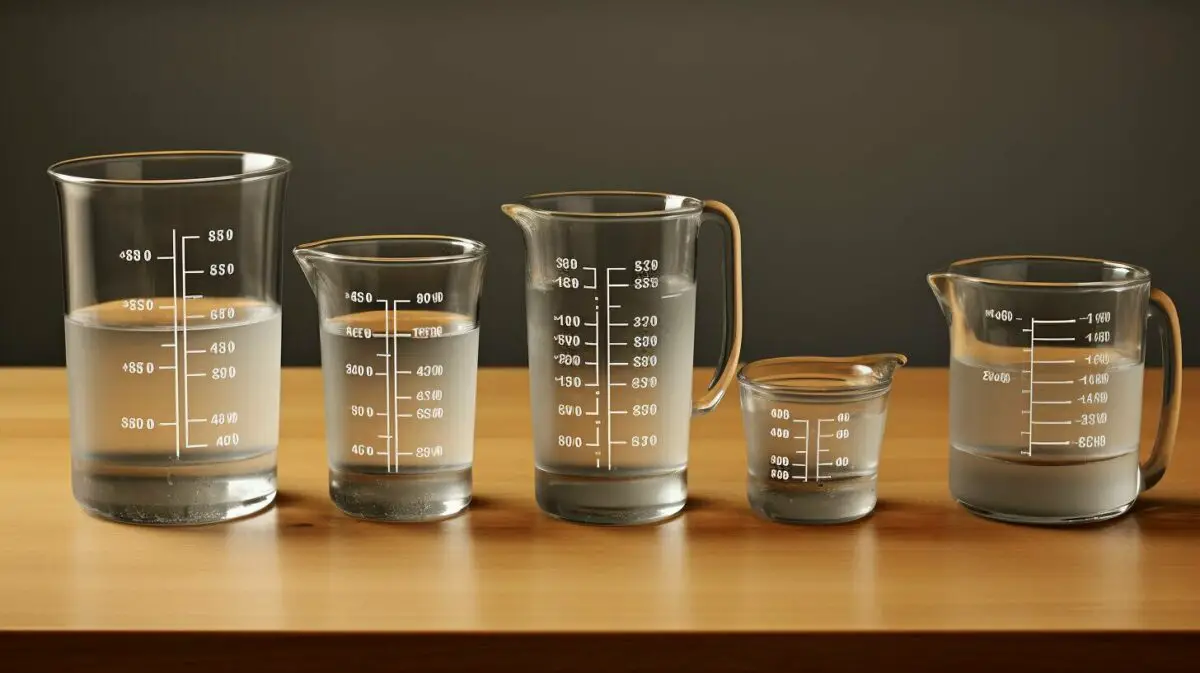
The table below provides a quick reference guide for fluid ounces to cups conversion:
| Fluid Ounces | Cups |
|---|---|
| 1 fl oz | 0.125 cups |
| 2 fl oz | 0.25 cups |
| 4 fl oz | 0.5 cups |
| 8 fl oz | 1 cup |
| 16 fl oz | 2 cups |
| 32 fl oz | 4 cups |
With this handy conversion table, you can easily convert between fluid ounces and cups whenever you need to. Whether you’re in the kitchen or tackling a project around the house, having this knowledge at your fingertips will make your life easier and ensure accurate measurements every time.
Exploring Larger Liquid Measurements
While cups and fluid ounces are commonly used for cooking, larger liquid measurements like pitchers, jugs, bottles, and glasses are prevalent for serving or storage. Understanding how to convert these measurements can be especially useful when preparing beverages, planning parties, or organizing your kitchen pantry.
Let’s take a closer look at some common larger liquid measurements and their equivalents:
| Pitcher Size | Fluid Ounces | Cups | Quarts | Gallons |
|---|---|---|---|---|
| Small Pitcher | 32 fl oz | 4 cups | 1 quart | 0.25 gallons |
| Medium Pitcher | 64 fl oz | 8 cups | 2 quarts | 0.5 gallons |
| Large Pitcher | 128 fl oz | 16 cups | 4 quarts | 1 gallon |
These measurements can vary depending on the specific product or brand, but this table provides a general guide to understanding the approximate volume of popular pitcher sizes. Keep in mind that it’s always a good idea to double-check the capacity of your own pitchers or containers for precise measurements.
Next time you’re hosting a gathering, imagine the convenience of knowing exactly how many cups or fluid ounces are in your favorite pitcher or jug. With this knowledge, you can confidently prepare and serve refreshing beverages to your guests without any guesswork.
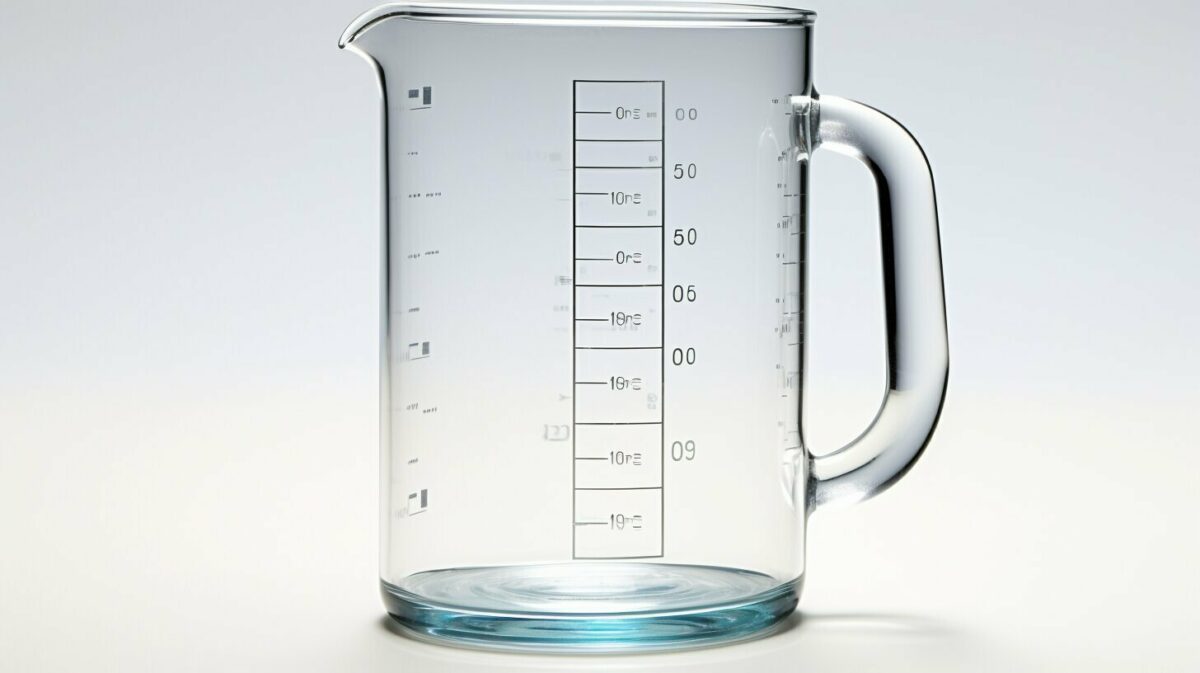
Understanding conversion factors and ratios can simplify the process of converting fluid ounces to cups. In American measurement, there are 8 fluid ounces in a cup. This fundamental conversion allows us to easily switch between these two commonly used units of volume. Whether you’re following a recipe, portioning out ingredients, or measuring liquids for various purposes, knowing how to convert fluid ounces to cups will come in handy in your daily life.
When it comes to dry ingredients, the conversion is not as straightforward as it is for liquids. The weight of a cup of dry materials can vary depending on the specific material and how it’s packed. For example, a cup of all-purpose flour may weigh around 4.5 to 5 ounces, while a cup of granulated sugar may weigh approximately 7 to 8 ounces. This variation can significantly impact the accuracy of your measurements, especially in baking or other precise tasks.
Using a scale to measure dry ingredients is recommended for precision. A kitchen scale allows you to directly measure the weight of the ingredient, eliminating any ambiguity or inconsistency caused by measuring cups. By using weight measurements instead of volume, you can ensure accuracy and achieve consistent results in your cooking or baking endeavors.
| Dry Ingredient | Weight per Cup (Approximate) |
|---|---|
| All-Purpose Flour | 4.5 to 5 ounces |
| Granulated Sugar | 7 to 8 ounces |
| Brown Sugar (Packed) | 7 to 8 ounces |
| Butter (Melted) | 8 ounces |
As you can see from the table above, different dry ingredients have different weights per cup. This specificity highlights the importance of using a scale for precise measurements. Whether you’re a seasoned baker or a kitchen enthusiast, investing in a reliable kitchen scale can greatly enhance your cooking experience.
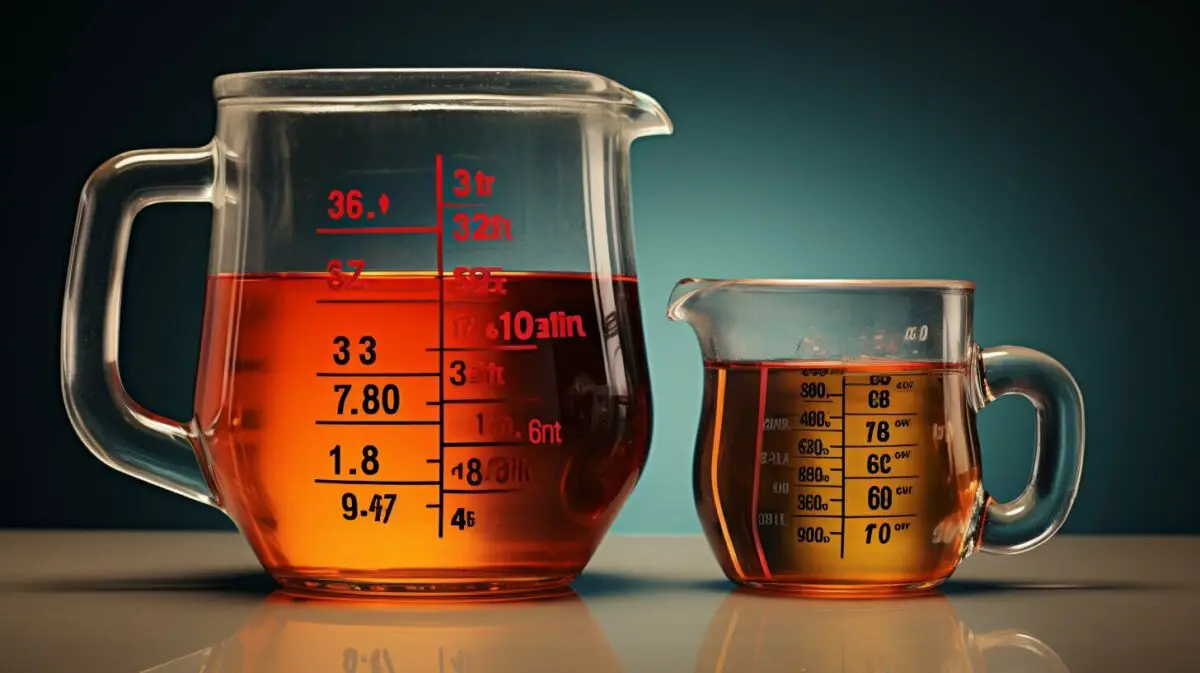
Now that we understand the conversion factors and the importance of precision in measuring dry ingredients, we can confidently navigate the world of fluid ounces to cups conversions. Whether it’s cooking, baking, or other daily tasks that involve measurements, having this knowledge will make our lives in the kitchen and beyond much easier.
US Customary Units and Imperial Units
It’s important to note that the United States uses US customary units, while Imperial units are predominantly used in other parts of the world. When it comes to measuring liquids, such as fluid ounces and cups, understanding the differences between these two systems is essential.
In the US customary system, a cup is equal to 8 fluid ounces. This measurement is widely used in recipes and cooking. Knowing this conversion allows you to easily follow recipes and create delicious dishes without any confusion. Whether you’re measuring water for a refreshing beverage or milk for a creamy dessert, understanding how many fluid ounces are in a cup is key.
When it comes to dry ingredients like flour or sugar, the conversion is not as straightforward. The weight of a cup of dry materials can vary depending on the specific material and how it’s packed. This is where using a scale can help ensure accuracy. By weighing your ingredients, you can be precise in your measurements and achieve consistent results in your baking or other DIY projects.
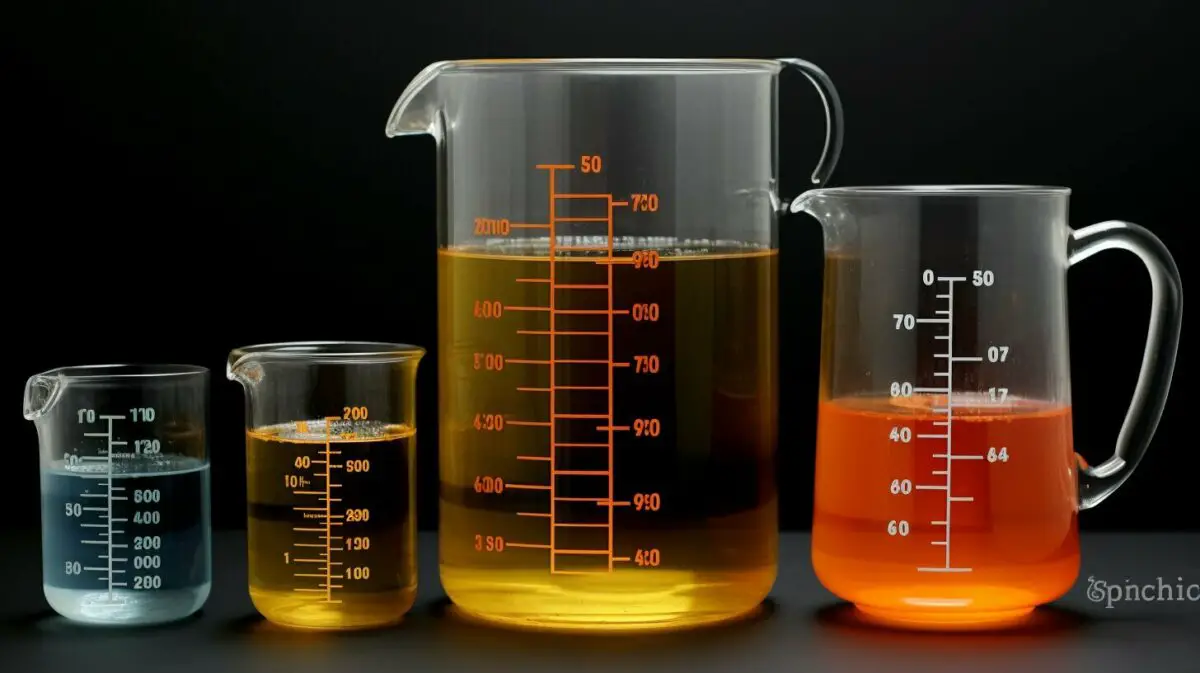
US Customary Units and Imperial Units Comparison
| Unit | US Customary | Imperial |
|---|---|---|
| Fluid Ounce | 1 fl oz | 0.96076 fl oz |
| Cup | 8 fl oz | 9.6076 fl oz |
| Pint | 16 fl oz | 19.2152 fl oz |
| Quart | 32 fl oz | 38.4304 fl oz |
| Gallon | 128 fl oz | 153.7216 fl oz |
In summary, understanding the difference between US customary units and Imperial units is crucial when working with liquid measurements. Knowing how many fluid ounces there are in a cup can make a significant difference in your recipes. Additionally, when it comes to measuring dry ingredients, using a scale can ensure precision and consistent results in your culinary endeavors.
Converting Cups to Other Units
Converting cups to other units of measurement is a useful skill for various culinary and household tasks. Whether you’re preparing a recipe or dealing with liquid quantities in other contexts, understanding how to convert between cups, pints, quarts, and gallons can save you time and ensure accurate measurements. Here’s a handy reference table to help you easily convert cups to different units:
| Cups | Pints | Quarts | Gallons |
|---|---|---|---|
| 1 | 0.5 | 0.25 | 0.0625 |
| 2 | 1 | 0.5 | 0.125 |
| 3 | 1.5 | 0.75 | 0.1875 |
| 4 | 2 | 1 | 0.25 |
| 5 | 2.5 | 1.25 | 0.3125 |
Use this table as a quick and reliable reference whenever you need to convert between cups, pints, quarts, and gallons. Simply locate the number of cups in the leftmost column and read the equivalent quantities in the other columns.
With this conversion knowledge, you can easily scale up or down recipes, measure out ingredients for a small gathering or a large party, or even estimate how much liquid your storage containers can hold. It’s a versatile skill that comes in handy both in the kitchen and beyond.
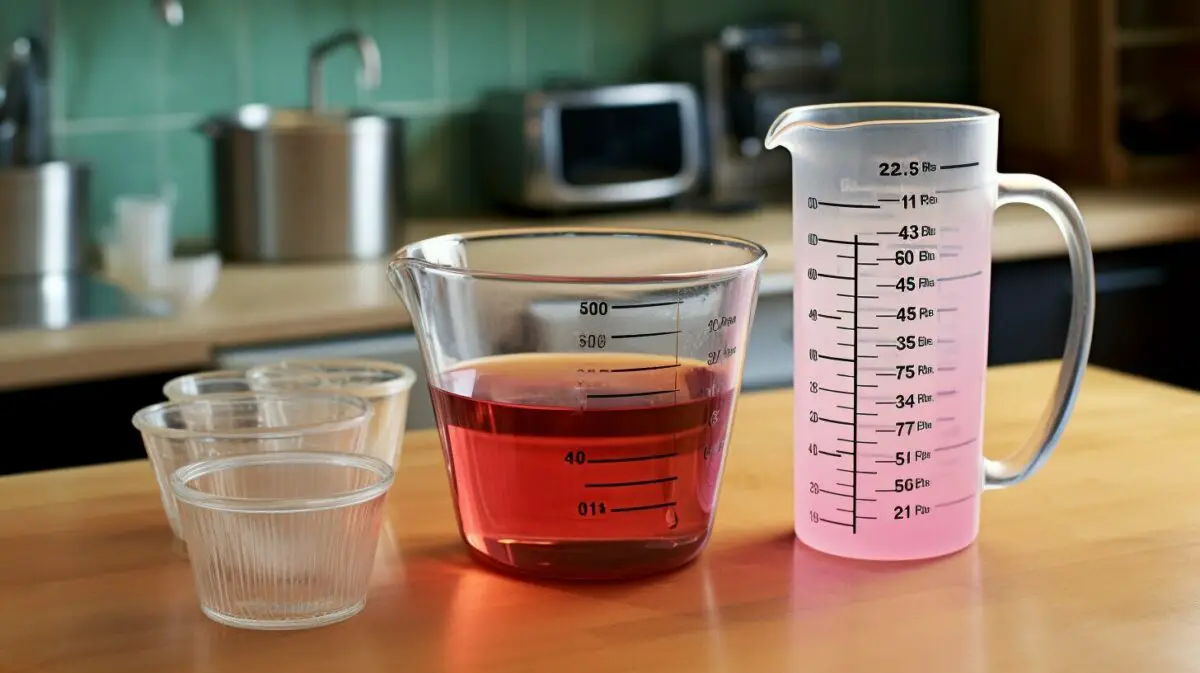
Remember, precise measurements are crucial for certain tasks, such as baking or scientific experiments. If utmost accuracy is required, consider using a digital scale to weigh your ingredients. This ensures consistent results and eliminates any guesswork associated with measuring by volume.
So, the next time you find yourself in need of converting cups to other units of measurement, refer back to this table and confidently tackle your culinary and household tasks like a pro!
Exploring Measurement Conversion Tools
If you find yourself needing frequent conversions, there are various measurement conversion tools available to simplify the process. Whether you’re in the kitchen, at work, or doing DIY projects, these tools can come in handy when converting between fluid ounces and cups, or any other measurement units. Online calculators and mobile apps are particularly useful as they provide instant and accurate conversions at your fingertips.
One popular measurement conversion tool is the online calculator, which allows you to quickly convert fluid ounces to cups or vice versa. These calculators often have customizable options to convert between different units of measurement, making them versatile for any conversion needs. Simply input the value you want to convert and select the desired units, and the calculator will provide you with the converted result.
“Measurement conversion tools are a lifesaver in the kitchen. Whenever I come across a recipe that requires fluid ounces, but I only have measuring cups, I rely on online calculators to ensure accurate measurements. It takes away the guesswork and allows me to follow the recipe with ease.”
For those who prefer mobile convenience, there are also measurement conversion apps available for download. These apps offer a wide range of conversion options, including fluid ounces to cups, and provide a user-friendly interface for easy navigation. Some apps even offer additional features like recipe scaling and ingredient substitution suggestions, making them a valuable resource for cooking and baking enthusiasts.
| Pros | Cons |
|---|---|
|
|
Using measurement conversion tools not only saves time and effort but also ensures precise measurements in various contexts. So, next time you find yourself needing to convert fluid ounces to cups or any other units, consider utilizing these convenient tools for a hassle-free experience.
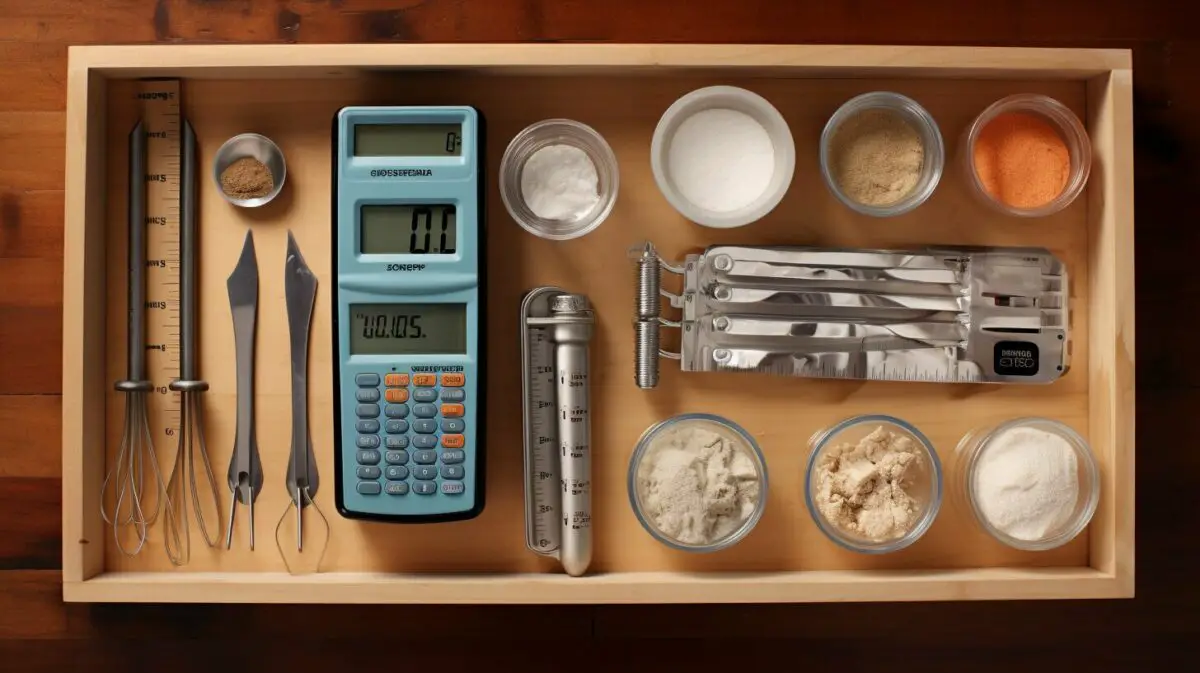
Converting fluid ounces to cups is a fundamental skill in the kitchen and beyond, allowing you to confidently navigate recipes and other daily measurements. In American measurement, there are 8 fluid ounces in a cup, which serves as a reliable conversion ratio for liquids. This knowledge comes in handy not only for cooking but also for various everyday tasks.
When it comes to dry ingredients, however, the conversion process is not as straightforward. Unlike liquids, the weight of a cup of dry materials can vary depending on the specific ingredient and how it’s packed. To ensure accuracy and precision in measuring dry ingredients, especially in scientific or DIY tasks, it is recommended to use a scale. This allows for consistent and reliable results every time.
While the conversion between fluid ounces and cups is essential for cooking, its versatility goes beyond the kitchen. Whether you’re making homemade beauty products, mixing cocktails, or measuring cleaning solutions, knowing how to convert between these two units of measurement will make your life easier.
In conclusion, understanding how many fluid ounces are in a cup empowers you to confidently tackle various measurements, providing accuracy and consistency in your daily tasks. Remember, precision is key, and having the ability to convert between ounces and cups will undoubtedly enhance your skills in the kitchen and other areas of life.
FAQ – How Many Fluid Ounces in a Cup
Q: How many fluid ounces are in a cup?
A: There are 8 fluid ounces in a cup.
Q: Is the conversion between fluid ounces and cups only used in recipes?
A: No, the conversion between fluid ounces and cups is used in many situations, not just in recipes.
Q: Is the conversion between ounces and cups the same for dry ingredients?
A: No, the conversion between ounces and cups for dry ingredients is not as straightforward as it is for liquids. The weight of a cup of dry materials can vary depending on the specific material and how it’s packed.
Q: What is recommended for precise measurement of dry ingredients?
A: For precision in measuring, especially in scientific or DIY tasks, using a scale is recommended.
Our Friends:
- https://timesofindia.indiatimes.com/education/learning-with-toi/how-many-ounces-in-a-cup-a-simple-guide-to-conversions/articleshow/103605910.cms
- https://www.usatoday.com/story/life/food-dining/2022/11/11/kitchen-conversion-chart-ounces-liquid-measurements/10652729002/
Related Recipes:
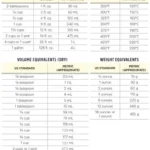 How Many Cups Are in a Liter: Unlocking the Mystery
How Many Cups Are in a Liter: Unlocking the Mystery
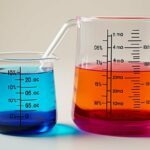 How Many Milliliters in an Ounce? (Perfect Measurement Conversion Guide)
How Many Milliliters in an Ounce? (Perfect Measurement Conversion Guide)
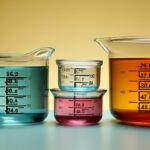 How Many Ounces Are in a Quart? (Ultimate Measurement Conversion Guide)
How Many Ounces Are in a Quart? (Ultimate Measurement Conversion Guide)
 How Many Ounces Are in a Pint? (Perfect Measurement Conversion Guide)
How Many Ounces Are in a Pint? (Perfect Measurement Conversion Guide)
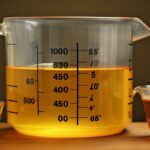 How Many Ounces Are in 750 ml? (Measurement Conversion Guide)
How Many Ounces Are in 750 ml? (Measurement Conversion Guide)
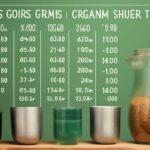 How Many Grams Are in an Ounce? (Perfect Measurement Conversion Guide)
How Many Grams Are in an Ounce? (Perfect Measurement Conversion Guide)
 How Many Ounces Are in a Cup? (Perfect Measurement Conversion Guide)
How Many Ounces Are in a Cup? (Perfect Measurement Conversion Guide)
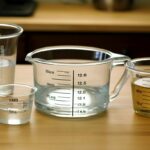 How Many Cups Are in a Liter? (Perfect Measurement Conversion Guide)
How Many Cups Are in a Liter? (Perfect Measurement Conversion Guide)



